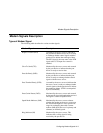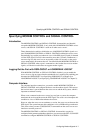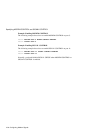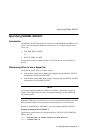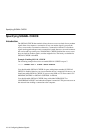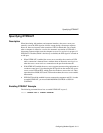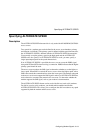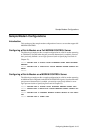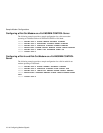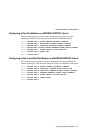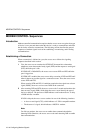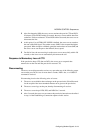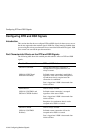
Configuring Modem Signals 10-13
Specifying ALTERNATE SPEED
Specifying ALTERNATE SPEED
Description
The ALTERNATE SPEED characteristic is only used with full MODEM CONTROL
access servers.
Two speeds for a modem port can be defined in the access server database: primary
and alternate (or fallback). The primary speed is defined with the speed characteristic;
the ALTERNATE SPEED is defined with the ALTERNATE SPEED characteristic.
You normally set up the primary speed as the high speed and the ALTERNATE
SPEED as the low speed. For ALTERNATE SPEED to work, you must specify a
single input/output speed for the speed characteristic.
If an ALTERNATE SPEED is specified, the access server asserts the DSRS signal
along with DTR and RTS when receiving a connection. DSRS indicates that the higher
primary speed should be used.
The access server monitors the SMI signal to determine whether to use the higher or
lower speed. When SMI is asserted, the access server selects the higher speed; when
SMI is deasserted, the communications selects the lower speed. The modem connected
to the access server must support the SMI signal in order for ALTERNATE SPEED to
work; otherwise, erroneous data transmission can occur. To determine whether the
modem supports the SMI signal, refer to your modem’s documentation.
The ALTERNATE SPEED feature can be used with dial-out (sends calls) modems.
For dial-in (receives calls) modems, you should enable autobaud and disable
ALTERNATE SPEED. This allows you to configure the dial-in modem to any speed
supported by both the modem and the access server.



